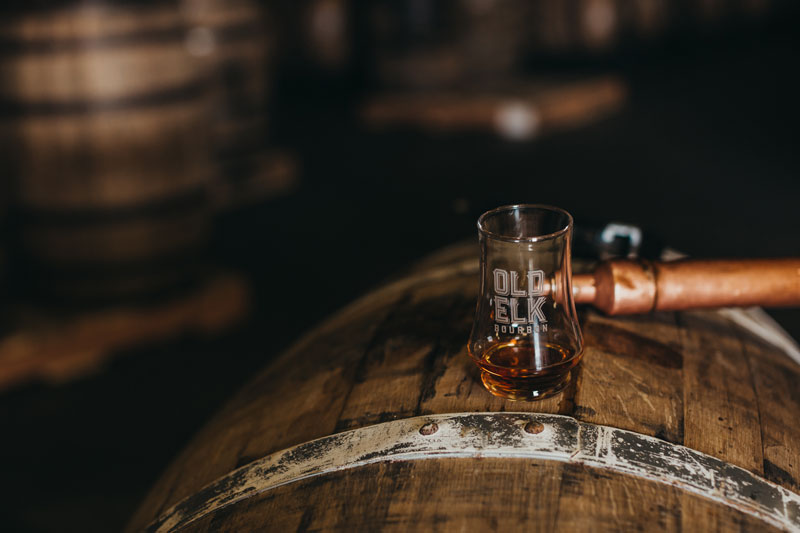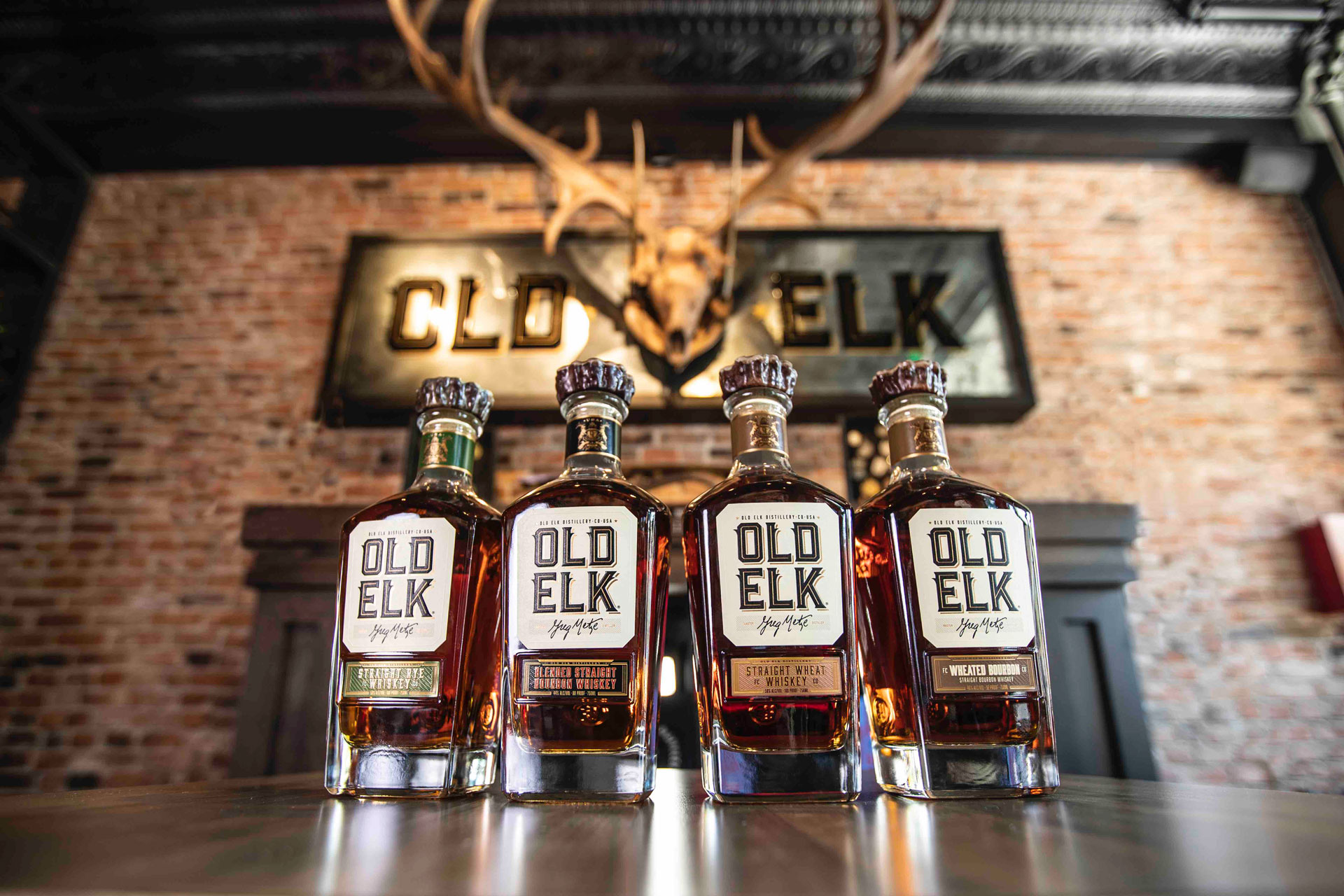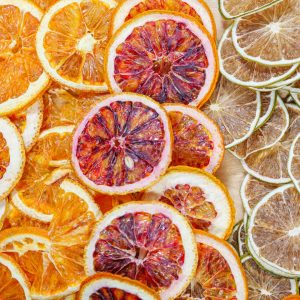Whiskey enthusiasts and connoisseurs alike often find themselves delving into the intricacies of whiskey production, where the alchemy of fermentation, distillation, and time transform raw ingredients into a complex and flavorful spirit. At the beginning of this captivating process lies the mixture of grains used as the raw ingredients to make whiskey. Known as a mash bill, this mixture is a fundamental but often misunderstood aspect of whiskey-making. To get a deeper understanding of how the mash bill functions within the broader whiskey-making process, we talked to whiskey-making veteran and current Master Distiller at Old Elk, Greg Metze.

How long have you been making whiskey? How did you wind up at Old Elk and how long have you been with the Company?
Metze: I started my career in June of 1978 after completing my Chemical Engineering Degree at the University of Cincinnati. I joined Seagram’s Distillery located in Lawrenceburg, Indiana to begin what became a 24-year training program to become a Master Distiller. To this day, I consider that training to be the best in the world. Over the course of my 38-year career at the Lawrenceburg distillery, I migrated from a producer of Seagram Brand products only to the world’s largest contract distiller. I met Old Elk in 2012 when they ask me to craft and produce custom whiskey mash bills specifically for them. I subsequently joined Old Elk in June of 2016 as a consultant and became a full-time employee as their Master Distiller in March of 2017.
What exactly is a mash bill and where does the mash bill fit into the bourbon production process?
Metze: Mash bills are the cereal grain recipes that are cooked, fermented, and distilled into the final product. There are endless possibilities relative to the ratios of cereal grains and types of cereal grains that are used. However, whiskey mash bills must follow specific guidelines dictated by the TTB to become a category of bourbon, wheat bourbon, wheat whiskey, or rye whiskey.
When weighed against other variables in the production process, how much does the mash bill affect the flavor of a finished product?
Metze: The mash bill plays a vital role in the flavor profile of the finished product as well as defining the category of spirit produced. Each cereal grain has a unique flavor characteristic that it imparts into the spirit. The Master Distiller has an open palette to create unique flavors by varying the type and mix of grains. The fermentation process, type of yeast used, and maturation also contribute significantly to the flavor profile of the finished product.
What goes into developing a mash bill? How much trial and error is involved?
Metze: Trial and error can be a major factor in building a mash bill to achieve a desired flavor. In my case, I leveraged my experience. I did not have the opportunity to craft and produce a custom mash bill until 2012, when Old Elk approached me to do so. I was 34 years into my career at that point and had a very good understanding of the flavors that cereal grain types provide for a whiskey distillate. I also had the training and experience needed to navigate the difficulties associated with processing high contents of malted barley, wheat, and rye grains in a mash bill. Old Elk wanted mash bills that were different from all others on the shelf. As a result, I crafted 3 mash bills to fit 3 separate whiskey categories.
Old Elk High Malt Bourbon:
- 51% Corn
- 34% Malted Barley
- 15% Rye
Old Elk Wheated Bourbon:
- 51% Corn
- 45% Wheat
- 4% Malted Barley
Old Elk Wheat Whiskey:
- 95% Wheat
- 5% Malted Barley
Can you describe the general flavor that each primary grain (corn, rye, wheat, barley) contributes to a mash bill?
Metze: Corn provides the robust flavor characteristics associated with a bourbon whiskey. I call it the “in your face” flavors. Sweet is another term commonly used.
Rye provides a very nice clove spice characteristic that I like. All of the whiskey mash bills that I have produced over my career contain a minimum of 15% rye.
Wheat provides floral, fruity, and spice-type notes. Generally, these flavors are gentle, very light, and mild. Interestingly, in many cases, these flavors are masked by the robust flavors of corn. They become more prominent as you lower the corn content in the mash bill.
Malted barley provides smooth and easy attributes. Maple and almond notes come to the forefront for me. Most whiskey mash bills contain the minimum amount of malted barley, needed to convert the starches in the other cereal grains to sugar. Old Elk uses 34% malted barley.
A common assumption in bourbon communities is that two bourbons with the same mash bill are essentially the same with minor differences, (e.g. Weller having the “same juice” as Pappy). Is there any truth to this belief or is there a general misunderstanding among bourbon drinkers about the production process?
Metze: There are many variables in this equation.
- Yeast strain
- Fermentation process
- Maturation
- Geographic location
It is impossible to replicate the flavors of a specific mash bill at different geographic locations. The indigenous flora and fauna associated with location impacts fermentation and flavor development. Yeast strain types, yeast propagation, and storage of yeast is a critical component. Fermenting processes and maturation are important variables as well. The key to any whiskey is the quality of water, grain, and fermentation. Any flavor developed during fermentation (good or bad) will transfer to the distillate. Moreover, a barrel will make good whiskey great but it will not make bad whiskey good.
What are the biggest misconceptions about mash bills that you run into in the industry? Would you like to clear the air?
Metze: The mash bill certainly plays a major role in the development of the sensory and organoleptic qualities of a whiskey. The biggest misconceptions that I experience are quality-related. You have to produce a high-quality whiskey distillate, free of quality defects before it goes into the barrel to be successful. The Master Distiller’s role is to make these evaluations and correct the cause of the quality defects on a daily basis. Most quality defects are grain quality, yeast, and fermentation related.








